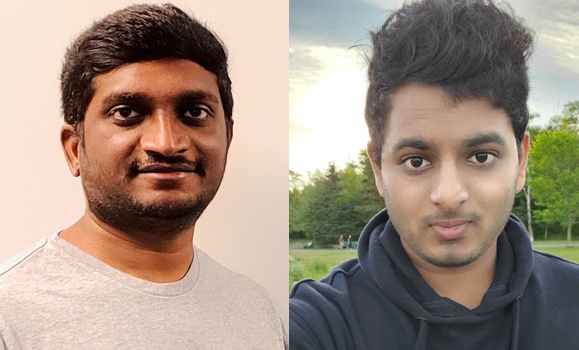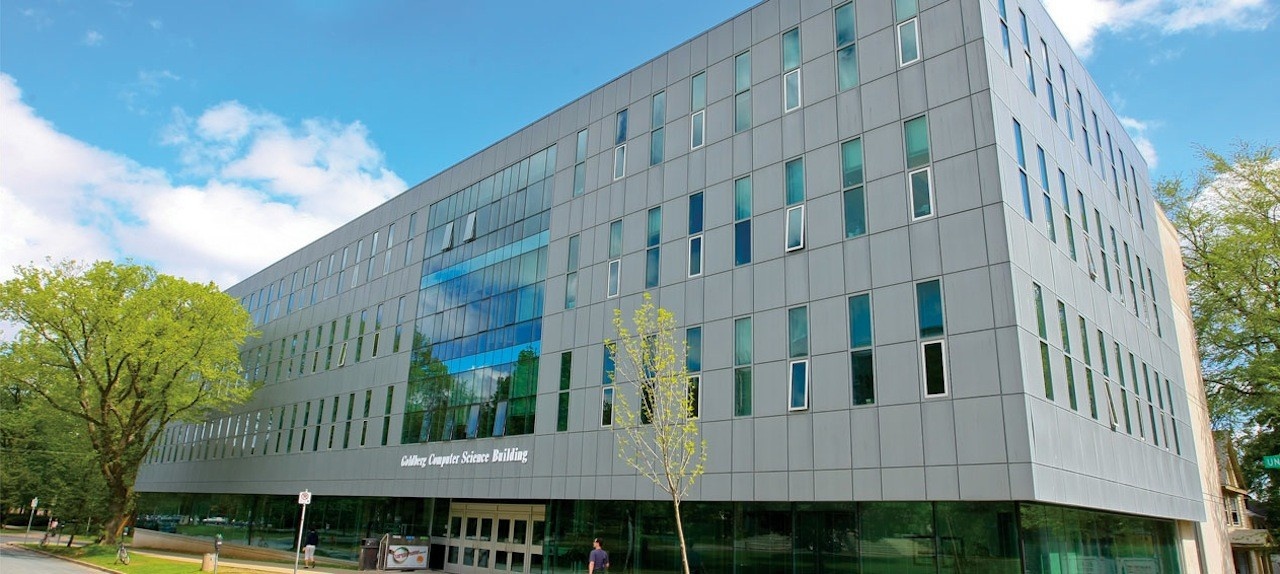» Go to news main
Grad profiles: A shared experience

This article is part of a series focusing on fall grads of the Dalhousie Class of 2021. Visit ourĀ Ā to share in the excitement with our newest graduates.
You could say Vishnu Kandimalla and Santosh Medisetty have followed similar journeys as Dalhousie students. They both took the Master of Computer Science program specializing in machine-learning research, they both did internships through Dalhousie-based ocean innovation environment DeepSense, and as they graduate, they are starting roles with the same company.
Vishnu and Santosh secured their roles at Innovasea in Halifax after working with the organization through two Mitacs funded DeepSense projects. Innovasea develops and produces technological solutions for aquaculture and fish tracking.
In their roles, the new graduates will have the opportunity to continue to develop their work to date into a commercially viable product.
Working together
Headquartered at pilipiliĀž», DeepSense enables ocean-related companies to connect with data and ocean scientists to leverage artificial intelligence and machine learning. DeepSense connected Vishnu and Santosh with Innovasea to help them tackle some of their more time-consuming tasks.
āFish play a crucial role in marine ecosystems and to survive, grow, and reproduce, fish, like all animals, require a healthy living environment, or habitat,ā says Vishnu. āMany large fish species have decreased in number, become extinct, or been replaced by other species that are more tolerant of environmental changes in areas where fish populations have been altered or damaged by humans. As a result, marine biologists and conservationists must detect and track fish species in videos and images regularly to measure the relative abundance of fish species in their habitats and track population changes.ā
Tracking and fish identification was previously being measured manually by humans. Vishnu and Santosh took this challenge and developed machine-learning solutions to make the process more efficient. With Santosh developing software to detect fish tags and Vishnu demonstrating that deep learning can be used to classify the species of fish from underwater visual sonar and video, this is particularly useful when identifying fish that canāt be tagged such as endangered species.
āIn acoustic fish tracking, the fish are equipped with acoustic tags that are either externally attached or surgically implanted into the fish. These tags can be tracked by a receiver placed within a range underwater. The tags emit high-frequency signals omnidirectionally at regular intervals, and these signals are recorded as pings in the receiver. The pings recorded by the receiver are represented as acoustic time series data that is analyzed to determine which tag the ping originated from,ā explains Santosh. āPreviously Innovasea was manually tuning the data to a particular tag period in a visual analytics system and identifying the pings which consumed much manual effort. We proposed a machine learning solution for identifying the tags using deep learning.Ā Our work discusses a novel approach to finding the pings by segmenting the images created from the pings.ā
Their approach works, with the trained model identifying tags with an accuracy of over 95 per cent, meaning that the solution can, to a great extent, help reduce human efforts.
Continued impact
As Machine Learning Engineers, Vishnu and Santosh will continue with their work to develop the solution into a product for Innovaseaās customers.
āBoth Vishnu and Santosh have been instrumental in helping us assess and prove the feasibility of several high-risk technology innovations,ā says Jean Quirion, vice president research and development at Innovasea. āSantosh was very quick to learn the intricacies of our proprietary fish tag signaling technology and was immediately able to apply modern deep learning techniques to automate signal detection. Similarly, Vishnu was able to apply deep learning techniques in unintuitive ways to track fish from cameras and sonar data. Both Vishnu and Santosh were very professional and well prepared in the field of machine learning. It was an easy decision to hire them upon graduation to continue working on these technologies at Innovasea.ā
While neither Vishnu nor Santosh imagined they would work in oceans, they both acknowledge how computer science is making an impact at this intersection.
āThere are many real time problems to be solved in the ocean technology. There are lots of problems where machine learning comes to matter,ā says Vishnu.
Santosh adds, āI came from an electronics background in my bachelors and then I worked as a software engineer. Before joining DeepSense and Dalhousie, I had very little knowledge in the ocean sector. Only after joining DeepSense, I learnt that there are many opportunities for computer science students in the ocean sector.ā
Recent News
- Calling all gamers: develop your own video game at Global Game Jam 2025
- Computer Science studentās startup promises to make driving safer
- Future alumni: Seif Elbayomi
- Computer Science alum says mentorship is a powerful tool
- Protecting our health, oceans, and future: Dal innovators celebrated at 22nd annual Discovery Awards
- Dal researcher is making smart home devices safer
- Tech triumph: Dalhousie wins big at 2024 Digital Nova Scotia awards
- Dr. Rita Orji wins Arthur B. McDonald Fellowship, NSERC's most prestigious prize for earlyācareer researchers
